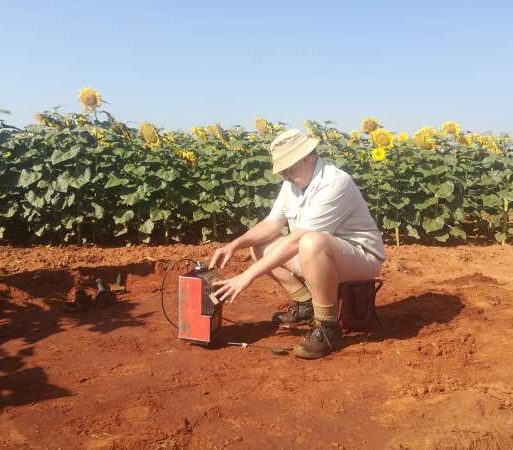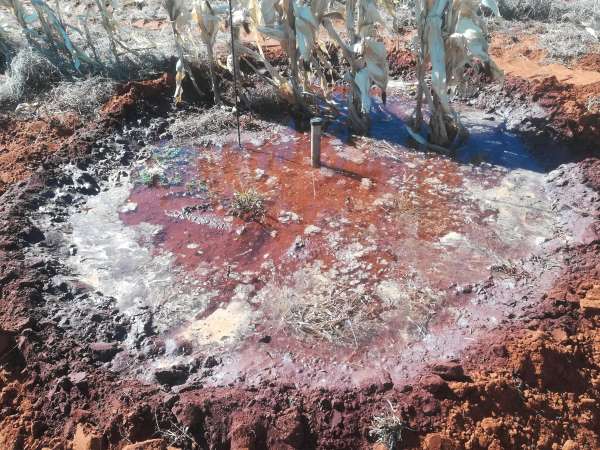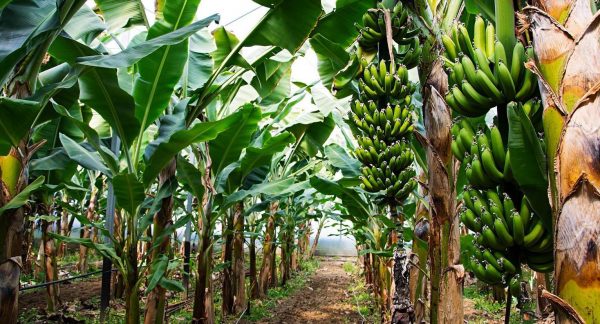Winter cover crops enhance soil health, but they also have an impact on moisture management, which has now been quantified for the first time. The study, initiated by InteliGro, highlights yet again the complexity of farming and, especially, how important it is that producers keep the bigger picture in mind when making decisions.
Simply put, healthy soils contain a wide variety of microbes that are in balance with each other When a certain micro-organism gains the upper hand, it easily turns into a pathogen. Fusarium is a good example. This fungus is necessary for the decomposition of organic material in the soil, but the exclusive cultivation of maize in many parts of the world over several decades, has contributed to Fusarium morphing into a root rot pest.
Soil microbes require a variety of living plant roots to flourish. In dryland farming, fields are left bare in winter with nothing to nourish and stimulate the microbes. In theory, such an off-season is to the detriment of the organisms and, consequently, the health of the soil. Winter cover crops sound like the ideal solution: they ensure living roots in the soil and the plant material can be used for animal feed.
Water in the west
The concept of winter cover crops was developed in Brazil, both as a method to improve soil health and to manage soil moisture levels. Brazil’s tropical climate, however, is worlds apart from the semi-arid western dryland production areas of South Africa, where water is as scarce as it is precious.
Traditional practice in this region is to leave fields bare in winter. Even weeds are actively eradicated to conserve carry-over moisture. The downside is erosion due to the topsoil drying out and the lack of living roots in the soil to stimulate microbe activity.
Over the past few years, growers have started planting winter cover crops to counter the disadvantages of bare fields.
“But in the western region this is a challenge,” says Gerrie Ludick, Technical Marketing Specialist at InteliGro. “The carry-over moisture that the winter cover crops consume is the foundation on which the yields of the next season’s summer row crops are built. Growers simply cannot afford to ‘waste’ it.”
Rainfed growers therefore have to consider the implications of cover crops in winter in the context of a full year’s production. Any moisture extracted from the soil during winter first has to be replenished by summer rains before the grower will break even. If not, the backlog is permanent and may have a detrimental effect on the next season’s yield.
Dividend calculations
The accepted way to calculate the return on investment in winter cover crops is kilogram meat/hectare, based on the number of live stock that can be fed with the bio-mass that had established due to these crops. “Until now, the moisture that the cover crops consume has never been determined in South Africa,” Ludick points out. “And to measure is to know.”
Martiens du Plessis, soil expert at NWK Agricultural Management Services, was approached to conduct an independent scientific study, using a calibrated neutron moisture metre to gather data. The measurement was done with 12 moisture measurement pipes, six in a soybean field and six in a maize field, on a farm in the Viljoenskroon district between December 2020 and April 2021. The maize plot was on well-drained soils and the soybean plot on a shallow water table.
The first finding was that winter cover crops are difficult to establish in the western region’s dry topsoil at the end of summer. From a seed mix consisting of grasses, tubers and legumes, only rye emerged and became established.
The second finding was that less moisture than expected is extracted during winter, but that moisture use increases sharply in spring. “Cover crops must, therefore, be terminated in late August, early September before they can deplete the soil moisture,” says du Plessis.
Thirdly, it was found that the water costs of a winter cover crop are considerably lower on a shallow water table than on a drained profile. Growers must carefully consider the fields on which cover crops are planted, as well as how wet the soil profile is at the end of summer. “Winter cover crops must preferably be limited to wet seasons,” says du Plessis. “In a dry season they can significantly impair the follow-up crops.”
In his conclusions, du Plessis converted the volume of water that had been extracted by the end of August and the end of October into kilogrammes of grain. On 30 August the loss of soil moisture that could be ascribed to the cover crop was 9.4mm (98.2kg/ha maize grain) and by 8 October it was 18.3mm (195.6kg/ha maize grain). At R3 800/ton for maize grain, the loss of income amounted to R373/ha and R743/ha respectively.
The winter cover crop decision
The study clearly showed that circumstances should determine the decision regarding winter cover crops. In wet seasons winter cover crops are an excellent way to improve biological diversity and soil health, whereas in dry seasons the risk to the next season’s summer crop yields could be too high.
“In some years cover crops will make sense and in others not, especially in the dry regions,” says Ludick. “The profit in kilogram meat/hectare must be higher than the loss in grain yield, measured in kilogram grain/hectare. But we also have an obligation towards sustainability. An investment in soil health has a short-term cost implication, but it is a responsibility that cannot be ignored.”








